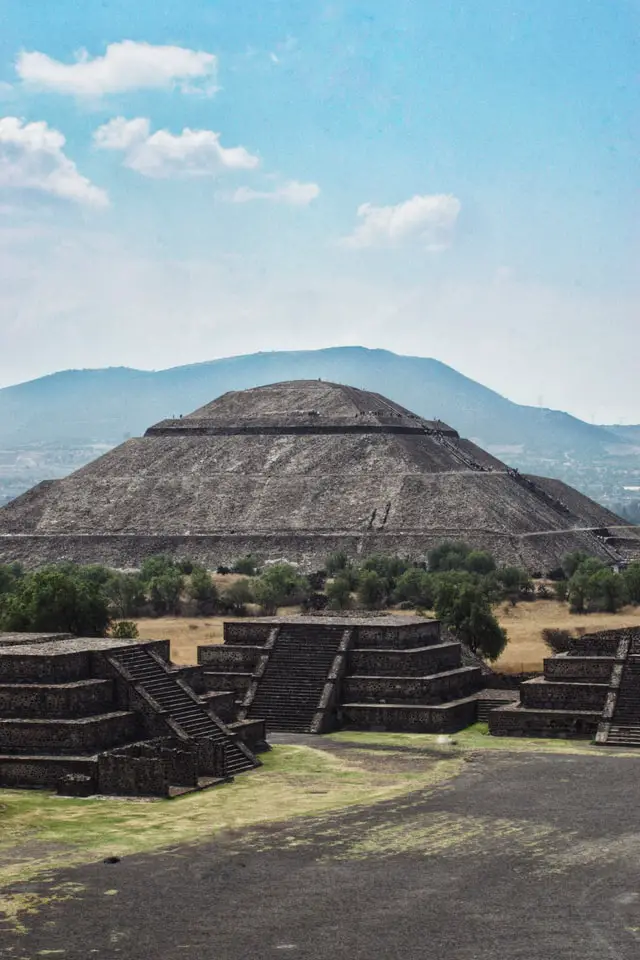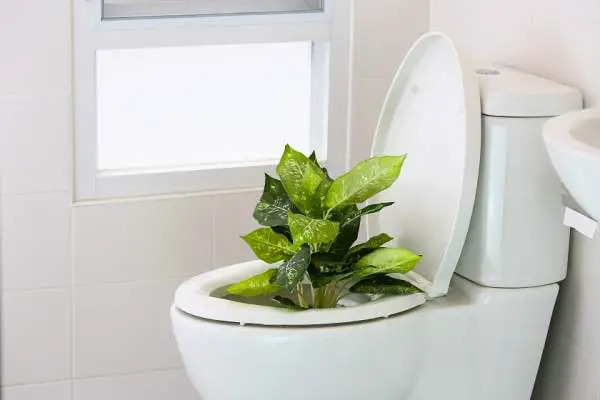Our ideas of modern hydroponics vary greatly, depending on how you ask. For a lot of people, however, they’re thinking of hydroponics as modern technology (likely thanks in part, to NASA’s use of it to test growing in space). The truth of the matter is though, that hydroponics is no new player to the game. Yes, we’ve done a lot of innovating since the very beginnings of hydroponics, but that tends to happen over thousands of years. To really appreciate the legacy that our modern hydroponics come from, we should look at the history of hydroponics. At least, briefly.
It’s Got Roots in Ancient Legends

The legendary hanging gardens of Babylon were said to have existed around 500 B.C.E. Created by King Nebuchadnezzar II as a gift to his wife Amyitis, the hanging gardens of Babylon were one of the seven ancient wonders of the world. Scholars and archaeologists have long studied the intricate watering systems that supported the massive gardens. With elaborately tiered stones holding the plants, water was delivered through a consistent flow from central water reservoirs. The plants were kept fed and supplied with plenty of aeration through the consistent flow of water to their roots.
Greek historians have described the legendary gardens by saying:
“Streams of water emerging from elevated sources flow on inclined channels. These waters irrigate the whole garden saturating the roots of the plants, keeping all the area wet. Thus, the grass is permanently green and the leaves of the trees grow firmly attached to flexible branches.”
While we ought to put in the disclaimer that these hanging gardens are, as of yet, the stuff of legends without a solid archaeological discovery, they’ve been well documented by historians. And to even the novice hydroponic gardener, the quote above is a pretty obvious description of hydroponic methods.
The Ancient Far East

For nearly as long as rice has been a harvested crop in Asia, it has been growing hydroponically. The image you’re probably conjuring in your mind is of the massive rice paddies that are concentrated around China. To be fair, that’s a pretty accurate assessment. While things like scale, spacing, harvesting and other lesser details may have changed, it’s not by much. The main process for growing the rice remains the same.
At the very onset of rice farming, there were attempts the grow rice in soil. While this was more difficult, rice as a crop showed itself to be a valid investment. After significant seasonal flooding, many other sustenance crops were destroyed. Rice, however not only withstood the watery conditions, it thrived. This was the spark that lit the fire that blazes in hydroponic rice farming to this day. After this revelation, rice was intentionally grown in organized water systems. Not only did the rice grow better, but it also resisted more disease and pests than other crops, as an added benefit to its hydroponic placement.
We have further documentation that the use of hydroponics continued, and further developed in China. When Marco Polo recorded his travels in the 13th century, China had taken hydroponics from being used for rice farming only to be used for aesthetic pleasure too. Polo described ‘floating gardens’ that floated in water on platforms.
It’s also worth mentioning that while rice fields were used for hydroponic harvests, they actually ended up providing more diverse food sources as well. Today, we use the term ‘aquaponics’ to refer to hydroponic systems wherein fish are also held, sometimes in commercial settings for fish farming. In Indochina and China, a similar system was established. Fish were raised and farmed in the flooded rice paddies already in use for crop production.
Related: How Does Aquaponics Work?
Modern aquaponics operates with the same similar principles historically used in the rice fields, but with a bit more nuanced, and a lot more technology. Basically, where a typical hydroponic system has a reservoir to hold the nutrient solution, an aquaponic system has a fish tank. A pump moves the water up to the grow tray, or plant bed. Excess water is filtered through by the plant roots (making it safe for fish again) and returned to the tank. The fish waste then provides nutrients to the water, which is then delivered back to the plants above.
Hydroponics in The Pyramids?

It’s not as well known, but that doesn’t make it any less true. The ancient Egyptians used hydroponic methods to grow crops as early as several hundred years B.C.E. Archaeologists have found documented proof of this in records detailing the methods and uses of these early hydroponic methods relying on the Nile.
So sadly, our visions of hydroponic pyramids aren’t accurate. But hieroglyphs have been found that tell us the story of an innovative people using the flooding Nile River to grow crops without soil.
Tiberius
Archaeologists have confirmed that hydroponics has been used in Rome as early as the first century C.E. The Roman Emperor Tiberius, for all his other transgressions, was the first (that we’re aware of) to successfully use more complex hydroponics in this part of the world. And while it wasn’t used widely to grow crops, he did get to enjoy some cucumbers out of season.
The Romans described the plants as growing through ‘clear stone’ and being watered for sustenance. While we may not know exactly what this ‘clear stone’ was, it was certainly their form of a growing aid. While it’s been debated what the translucent stone actually was, some people think it was a form of growing medium.
The reality is (as strange as it is to think about) that this translucent stone was most likely an early form of a greenhouse. By using a clear material (like stone or glass), the off-season cucumbers would have gotten ample sunlight, heat, and retain humidity.
The Aztecs

Another notable civilization that employed the use of hydroponics was the Aztecs. They developed an impressively well-designed hydroponic system that successfully provided their people with plentiful crop harvests. Their use of hydroponics was developed out of necessity due to their nomadic culture and their situation within swampy, marshy lands. In these regions, it simply wasn’t possible to farm traditionally because there was very little if any suitable land.
The Aztec hydroponic system is akin to what we might picture as a floating raft farm. By creating dense rafts from reeds and rushes secured with tough dried roots, they were able to float crops in the canals around their settlements. Rather than fields, they had canals full of thriving crops and gardens. To secure plants to the rafts they dredged up nutrient-rich silt from the river or canal’s bottom, while plant roots pushed through the bottom of the rafts to reach the water below.
These rafts were called Chinampas. These Chinampas were so well developed that they never sank despite heavy crop growth (and even growing trees hydroponically on the rafts).
The best comparison we can make between the Chinampas and the hydroponic systems we’re familiar with today is DWC, or deep water culture, systems.
Related: How do Deep Water Culture Systems Work?
Deep Water Culture systems keep plants in growing trays or platforms that allow the roots the hang beneath and into a nutrient solution below. To maintain adequate aeration, DWC systems often use an additional air pump or airstone. Typically roots are held in net pots that are submerged in the nutrient solution.
The Onset of Modern Hydroponics

The long-used hydroponic systems among other civilizations didn’t go without notice from foreign explorers. From Spanish Conquistadors in Mesoamerica to Christopher Columbus’ recollections of his visits to China, the use of hydroponic systems was well documented.
What we may consider more modern hydroponics really began with the first attempts to understand hydroponics in an analytical, scientific manner. While we can debate what constitutes ‘modern hydroponics’ for days, let’s err on the side of simplicity. So, in the interest of avoiding a wormhole debate, we’ll say ancient hydroponics was achieved and used, but not analyzed on a quantifiable, scientific method. Likewise, we’ll say modern hydroponics began as we began to measure, analyze, and modify existing hydroponic systems.
It’s worth noting that often various scientists, agriculturists, and other innovators came to similar revelations about plant growth, physiology, and hydroponics, although at different times and to varying specifications. Keeping that in mind, note that mentions of discoveries that were repeated or ‘rediscovered’ aren’t in error, they’re simply a result of our ebbing and flowing development.
Early Ideas that Supported Hydroponics
The master inventor and artist Leonardo da Vinci, like many of his innovations, was ahead of his time in his revelations about plant growth. While the French king Francis I had da Vinci in his employment, the inventor progressed his studies in agriculture. Ultimately he determined that plants need minerals to grow, which they absorb from the soil. Notably, he realized that this occurs only with the help of water, the absence of which prevented any nutrient absorption.
While it was another couple hundred years before more modern scientists picked up on his discoveries, we’d be remiss to neglect and not give him credit. He detailed the strong importance of irrigation and effectively laid out some of the very basic principles that govern hydroponics today. Mineral absorption through water, the importance of irrigation, and the idea of doing away with soil and delivering minerals through water are just some of the things we can credit to him.
Main Developments in Hydroponics 1600s to 1800 C.E.

Starting in the 1600s, people began to attempt to create methods of protecting crops from weather and increase their harvesting capabilities. While these developing techniques weren’t strictly hydroponic, they did signal the beginning of an increasing interest in developing more advanced methods of harvesting crops.
Sir Francis Bacon takes the title for the first ‘modern’ published book concerning growing plants in a soilless environment. The book itself was Sylva Sylvarum and sadly wasn’t published until the year following his death, 1627. We can rightfully thank Sir Francis Bacon for the growing popularity of hydroponic research that began thereafter. So, thank you, Sir Francis Bacon.
The next major revelation of hydroponics didn’t happen again until 1699. At this point, John Woodward had been experimenting with growing spearmint in soilless culture. When he published his experiments, he noted that the plants grew better in less pure water (rather than the distilled water he also attempted to use).
The next century passed without much innovation specific to hydroponics. That being said, the 1700s did bring the invention of manure heated greenhouses, which helped push along the influx of heated greenhouses (which can be compared to the heated hydroponic systems commonly seen today).
19th-Century Developments
After a couple of centuries of what we can call ‘simple’ attempts to understand different aspects of hydroponics, scientists were starting to get it (or at least they were on to something). We can credit the 1800s with a lot of discoveries that led the way to the further development of hydroponics.
By about 1842 they had created a list of 9 nutrients that they believed were necessary to sustain plant life. While it wasn’t perfect by any means, they weren’t too far off. Having realized that by adding minerals and nutrients (in this case they simply said ‘elements’), they could add these to the plants’ water supplies and progress to soilless crop growth.
By 1851, this list of 9 elements essential to plant growth had been more or less confirmed by Jean Baptiste Boussingault. We can also attribute much of the development of what we call ‘growing mediums’ to his research. He used inert, soil-like materials to place plants in, such as charcoal, pure sand, and quartz. Boussingault then nourished the plants with chemical solutions he recorded. Water was needed, that was a given. But in his work he was pretty close to the mark with the other nutrients needed: namely, Nitrogen.
He then started work on the ratios of the minerals needed. If you’ve ever had to purchase nutrient solutions for your hydroponic system, this should sound very familiar (think of the N-P-K ratios on every container).
Beyond the realization that nutrients needed to be added, there weren’t a whole lot of other leaps in the study of hydroponics (at least as far as the 1800s are concerned). However, this revelation was a critical foundation for the continued development of better plant food, much like the hydroponic fertilizers we use today.
Early 20th Century Developments

While ‘hydroponics’ is a household term today, it was only relatively recently that this ‘soilless culture’ got the title it uses now. In the 1920’s William Gericke, a professor at the University of California in Berkeley began promoting soilless crop growth and later coined the term ‘hydroponic.’ While he initially tried calling it ‘aquaculture,’ he soon discovered that the term was already being used to refer to the culture of aquatic creatures and organisms. Thus, he settled on hydroponic.
The term comes from Greek roots:
Hydro: “water”
and
Ponos: “labor”
Gericke created something of an early PR opportunity for hydroponics when he appeared with vertically grown tomato plants in his new nutrient solution culture. Here’s the real kicker:
His tomato plants grew a whopping 25 feet tall.
From 1925 to 1935 there was an increased interest in plant physiology and enhancing techniques for crop growth. While greenhouses were established (and even experienced an early introduction to hydroponics with the use of gravel culture over soil culture), they were just plain expensive and didn’t catch on much. That’s because the growing beds were still being constructed of concrete, and that got costly.
However, the expenses of food production also nudged hydroponics onto the world stage. Transporting food to troops overseas during the Second World War was also a financial burden. Rather than creating a shift away from hydroponics, it actually prompted the widespread use of hydroponics throughout the Pacific and South Atlantic. This, in turn, increased hydroponics’ overall popularity and created a solution that provided economically grown crops to the troops stationed there.
In 1938, Gericke’s work on soilless culture was expanded by two scientists also hailing from UC Berkeley. Daniel Arnon and Dennis Hoagland were the two to take up the cause, and they ended up publishing one of the cornerstone documents of hydroponics. Their work, The Water Culture Method for Growing Plants Without Soil, is generally considered one of the most important publications to the development of hydroponics. They detailed the process and included formulations for nutrient solutions, now called Hoagland solutions, that are still widely used today.
This ultimately resulted in one of the first major commercial hydroponic operations. Wake Island, a typical stopover and refueling point for Pan-Am Airways, was used as the staging area for this operation. They were able to successfully grow vegetables hydroponically, which in turn was used to feed the Pan-Am airline workers.
Growing into Greenhouses

Greenhouses experienced a significant boost in the 1950s thanks to the developing proliferation of plastic and all its uses. Just like you see in greenhouses, plant factories, and home hydroponic systems today, plastic became a staple material in constructing these plant habitats.
Previously the heavy, expensive materials used as glass in concrete prevented much development in greenhouses, and as a result, the hydroponic systems housed therein. This newer, cheaper material (plastic, of course) made way for a lot of innovation to come. Because of the dynamic uses of plastic, new and essential components for hydroponic systems. This allowed for drip systems, improved irrigation, filters, and water reservoirs, among other innovations to be introduced.
Thanks to this new accessibility and reduced cost, there was a sort of boom in hydroponics’ popularity. Ultimately, this ended up with an influx of investment into large, commercial hydroponic systems.
As it happened, the influx of plastic and greenhouse systems also cleared the way for drip irrigation. Today, drip systems are still a common type of hydroponic setup because of their ease of use, effectiveness, and inexpensive needs.
Related: What is a Hydroponic Drip System?
Drip irrigation isn’t limited to hydroponics. In fact, it’s a common method of irrigating soil-grown crops too. Basically, tubes or pipes deliver smaller amounts of water and nutrients (or ‘drips’) to plants close to their roots. The delivery tubes usually have small holes placed at specific intervals to reach each individual plant. In hydroponic drip systems, it works exactly the same way, although the placement of drips and plants may be slightly different.
Later 20th-Century Developments
In the 1960s, we finally see the development of more specific hydroponic system types. The first that appeared was the Nutrient Film Technique, developed in England by Allan Cooper.
Related: What is Nutrient Film Technique (NFT)?
Briefly, Nutrient Film Technique type systems use a growing tray with channels where the roots of plants sit. The tray is placed at a slight angle while water saturated with nutrient solution flows across the roots continuously, providing both nutrition and aeration. The excess runoff water is then deposited back into the reservoir where it is pumped back into the root channels.
By 1978 the public had a resource to understand and implement hydroponic systems of their own: the book Hydroponics Food Production was published by Dr. Howard Resh, an early hydroponics pioneer. Thanks to this publication, we can credit the use of the staple 3 ratio nutrient solution (Nitrogen-Phosphorus-K potassium) that we still use today.
By the 1990s NASA started research using aeroponics as a more efficient method of growing plants in space. By 1996 a researcher by the name of Richard Stoner began getting funding from NASA to further continue his research of aeroponics in pursuit of crop production in space. In the following years, 1998 and 1999, their research focused tightly on developing an effective aeroponic system that would work with zero gravity. They ended up designing a functioning, self-contained aeroponic system that could be used in colonizing space.
Related: What is Aeroponics?
Aeroponics is a form of hydroponics, although sometimes people mistakenly refer to them as entirely different things. Aeroponics still relies on the use of water only to deliver nutrients. The difference from other hydroponic systems is that aeroponics delivers water in very fine mist droplets that spray more frequently (or constantly in some systems), and no growing medium is ever used. The fine mist reaches roots and provides efficient delivery of nutrients without the need to worry about extra aeration.
Contemporary Hydroponics
All of the history that built hydroponics into various civilizations is the foundation of our contemporary hydroponics today. Hydroponics began as a simplified process compared to what it can be today. That being said, the main functions of hydroponics aren’t so very different from their ancient origins. The founding principle of hydroponics, using water rather than soil to grow plants, hasn’t changed. No matter the system used, it all depends on water and the movement thereof.
Contemporary hydroponics does offer a lot of upgrades compared to the systems used over the past thousand years, though. And it’s not just technique and equipment upgrades either. Now we have advanced techniques for monitoring water and nutrient levels, intricate calculations for plant and tower spacing, man-made growth mediums, and so much more.
We now have the capacity to create huge, eco-friendly, and energy-efficient greenhouses so massive that they’re referred to as ‘plant factories.’ Likewise, we can create home hydroponic systems that can grow anything from strawberries to miniature fruit trees.
Because of our technological advancements, we’ve been able to further increase the efficiency of hydroponic systems and create new techniques like aeroponics and fogponics. Innovators across the globe are sharing knowledge and contributing to the growth of hydroponics as a field of its own.
The Future of Hydroponics
In the history of hydroponics, we find millennia of innovations and developments. Though slow going at first, hydroponics has literally revolutionized cultures throughout history and brought prosperity as a result.
It’s worth noting the exponential development of hydroponics within the past century especially. As with any other technological development, we’re in an age of rapid growth. Hydroponics systems can be expected to accompany any space colonization, as we’ve seen through aerospace research.
We’ll surely see an influx of newer, more accessible hydroponic methods. Because of hydroponics’ high efficiency and environmental benefits, it’s already being looked at to solve issues with traditional soil agriculture. It’s not a far leap to expect to see hydroponic overtaking field farming, especially considering the ‘plant factories’ we already see popping up across the globe.
No matter what, we can look at the history of hydroponics and see that it’s been a staple of human innovation. That will always continue, as will the drive of human nature to improve, innovate, and find new ways to bring prosperity to our societies.





